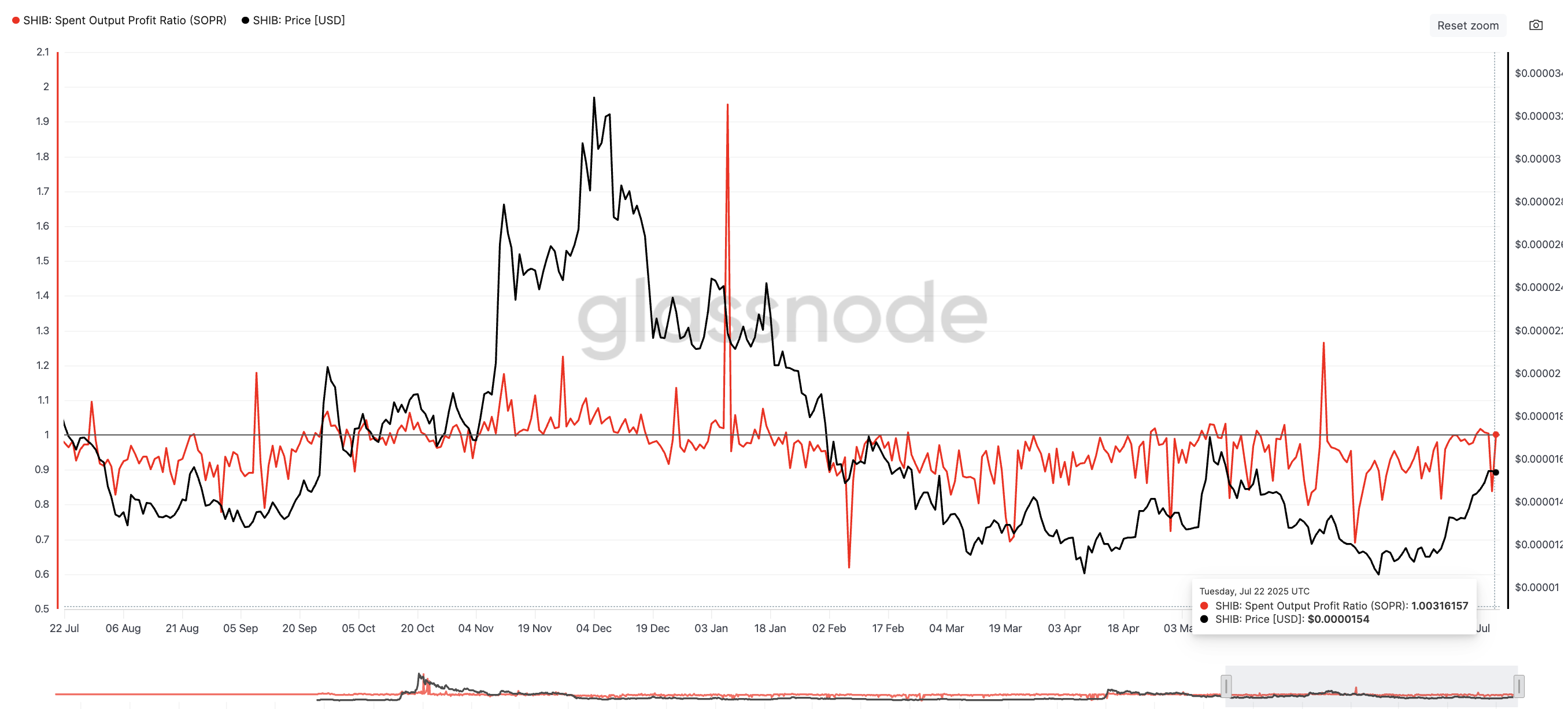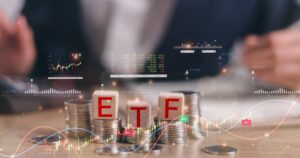Shiba Inu (SHIB), the popular meme-inspired cryptocurrency, is showing strong indications of a significant price surge, with analysts pointing to a potential 45% upside. This optimistic outlook comes as key market indicators suggest that profit-takers are largely absent, allowing for a more sustained upward movement.
Currently trading around $0,00001500, SHIB has seen an impressive gain of approximately 8% this week and over 30% this month. While still below its January peak of $0,000024, the underlying market behavior suggests conditions are ripe for further appreciation.
Weak Hands Exit Quietly, Paving the Way for Gains
A crucial factor in this bullish scenario is the behavior of the Spent Output Profit Ratio (SOPR). This metric tracks whether coins sold on the blockchain are realizing profits (SOPR above 1) or losses (SOPR below 1). For Shiba Inu, the SOPR has been consistently hovering around 1, or even dipping below, following earlier price movements.
For instance, on April 30, SOPR fell to about 0,72 when SHIB was trading near $0,00001327. As the price climbed to around $0,00001700, SOPR gradually returned towards 1,0. A similar pattern emerged in June. This indicates that investors selling their SHIB are doing so at break-even or a slight loss, rather than taking substantial profits. In essence, “weaker hands” are quietly exiting the market, which thins out the supply available for sale at higher prices. Historically, significant market pullbacks typically occur when SOPR firmly crosses above 1,0 while the price stagnates – a condition not yet observed for SHIB.

Shiba Inu price and SOPR: Glassnode
Bullish Divergence in RSI Signals Growing Momentum
Beyond the absence of profit-taking, the Relative Strength Index (RSI) – a momentum oscillator – is signaling a build-up of buying strength. The RSI measures the speed and change of price movements, ranging from 0 to 100.
Since mid-June, Shiba Inu’s daily RSI has recorded slightly higher highs, even as the price has formed a lower high. This technical phenomenon, known as a “bullish divergence,” suggests that underlying buying pressure is increasing faster than the visible price action. While subtle, this divergence hints that buyers are gaining strength, setting the stage for a potential breakout. If the RSI continues its upward trajectory and the price follows suit, the probability of a significant breakout increases considerably.
Navigating Key Price Levels for a 45% Target
For Shiba Inu to achieve its projected 45% upside, specific price levels will be critical. The immediate ceiling for SHIB is identified at $0,00001587, a resistance level that has historically rejected previous upward attempts.
A decisive daily close above this $0,00001587 mark could propel SHIB first towards $0,00001746 (representing approximately a 16% increase from current levels). Beyond this, the next significant target looms at $0,000022, marking the ambitious 45% rally. It’s worth noting that crossing the psychological resistance of $0,000020 (a 33% increase from the current price) would be an important intermediate step before reaching the $0,000022 target. Analysts suggest that once SHIB surpasses $0,00001746, there are fewer technical resistance levels, potentially allowing for a faster ascent.
On the downside, key support levels to monitor include $0,00001463, which acts as the first line of defense, followed by $0,00001375, corresponding to the 0,5 Fibonacci retracement level. The bullish outlook would significantly weaken if SHIB’s price were to fall below these supports while the SOPR simultaneously jumps above 1,0, which would indicate a surge in profit-taking.
The Path Ahead for Shiba Inu
The current market indicators for Shiba Inu paint a compelling picture of potential growth. With profit-sellers staying largely quiet and momentum building beneath the surface, the path appears clear for a retest of higher price levels. Investors will be closely watching the critical resistance at $0,00001587 to confirm the projected rally.
Disclaimer: This article is for informational purposes only and should not be taken as financial advice. Always conduct thorough research before making investment decisions.





